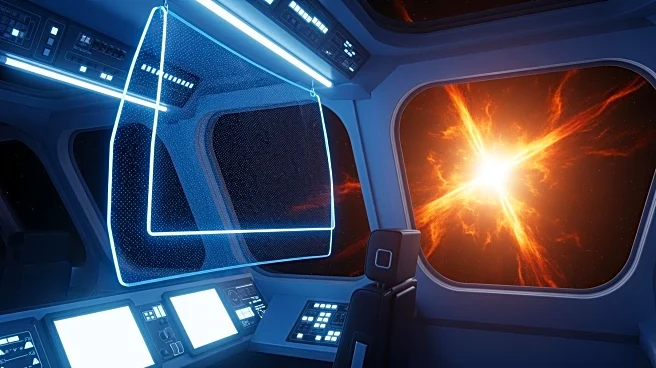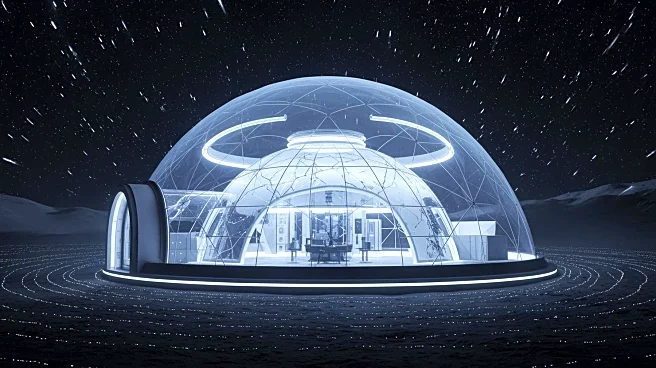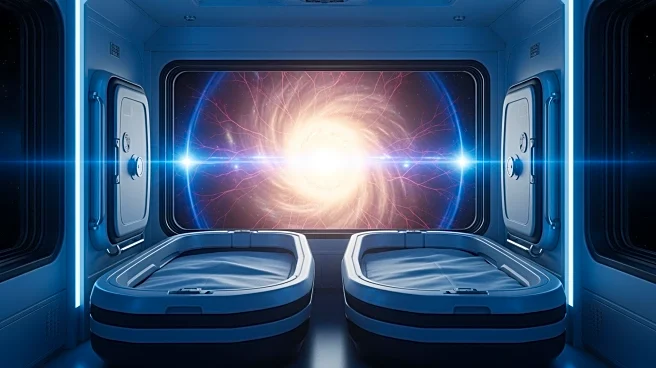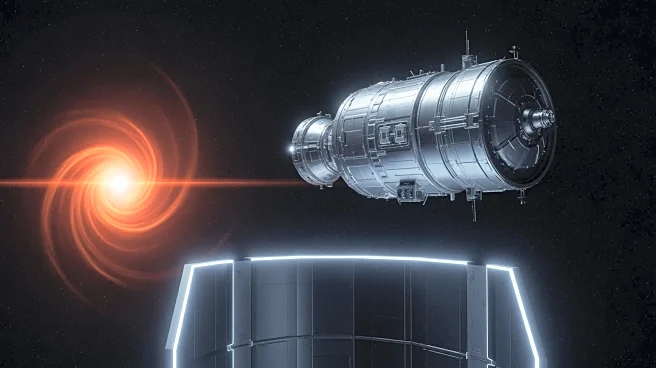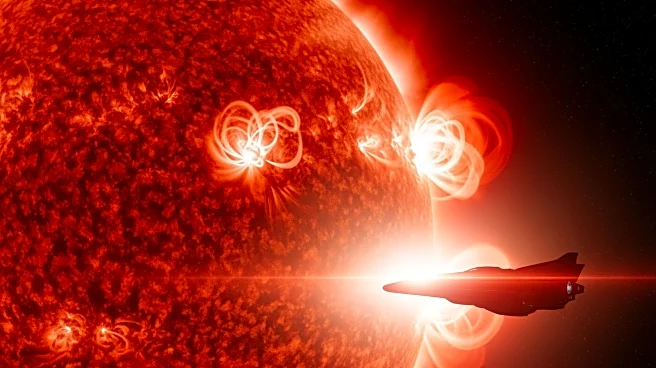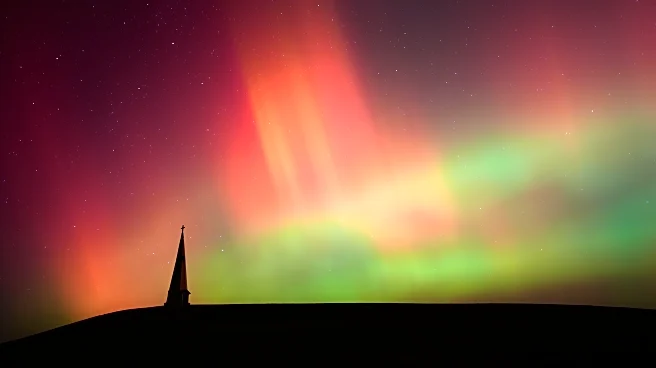What's Happening?
Astronauts aboard the International Space Station (ISS) recently faced heightened radiation risks due to a solar storm. The storm, caused by coronal mass ejections from sunspot group AR4274, led to increased radiation levels that required the crew to take
preventive measures. Russian cosmonauts Oleg Platonov, Sergey Ryzhikov, and Alexey Zubritsky relocated to the station's laboratory module for additional protection, while other crew members remained in their designated sleeping quarters. The solar storm not only created dazzling auroras visible from Earth but also posed significant health risks to astronauts due to the high-energy particles released by the sun.
Why It's Important?
The event underscores the importance of monitoring solar activity and implementing safety protocols for astronauts. Solar storms can interfere with satellite communications and GPS systems, and pose direct health risks to astronauts due to radiation exposure. As space exploration missions become more ambitious, including potential lunar and Martian expeditions, understanding and preparing for solar storms is crucial. The current solar cycle is marked by active sunspot groups, suggesting that more frequent and intense solar storms may occur, necessitating robust safety measures for space missions.
What's Next?
Space agencies like NASA continue to monitor solar weather using tools such as the Solar and Heliospheric Observatory (SOHO) to predict potential solar storms. As the solar cycle progresses, agencies must factor these events into mission planning and astronaut safety protocols. The increasing frequency of solar storms highlights the need for ongoing research and development of protective measures to ensure the safety of astronauts during space missions.
Beyond the Headlines
While solar storms pose risks to astronauts, they also offer a visual spectacle in the form of auroras. These natural light displays are caused by the interaction of solar particles with Earth's magnetic field, creating colorful shows in the sky. However, the same particles that create auroras also pose a threat to those in space, emphasizing the dual nature of solar storms as both beautiful and dangerous phenomena.
